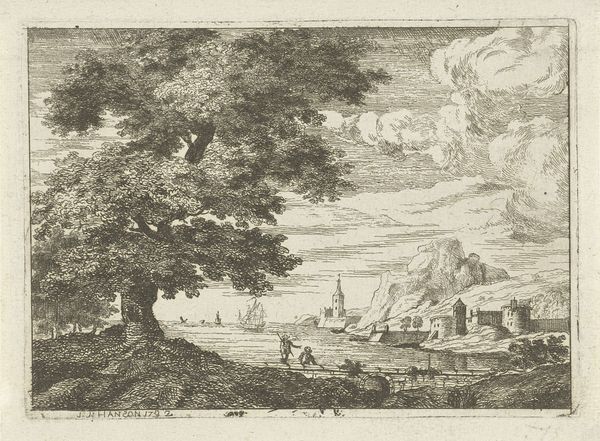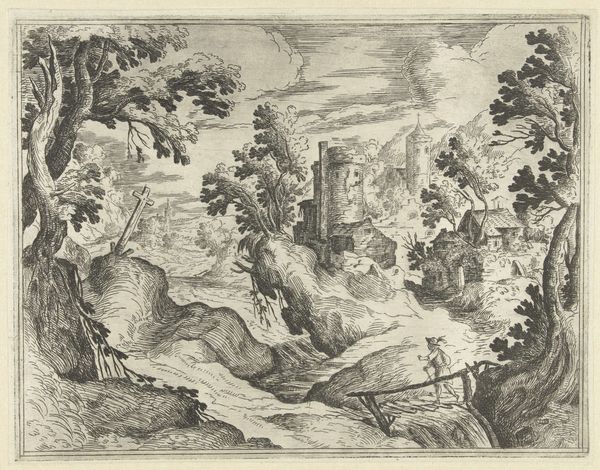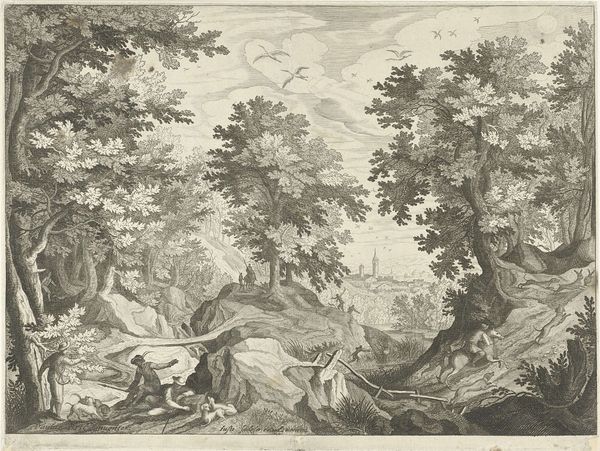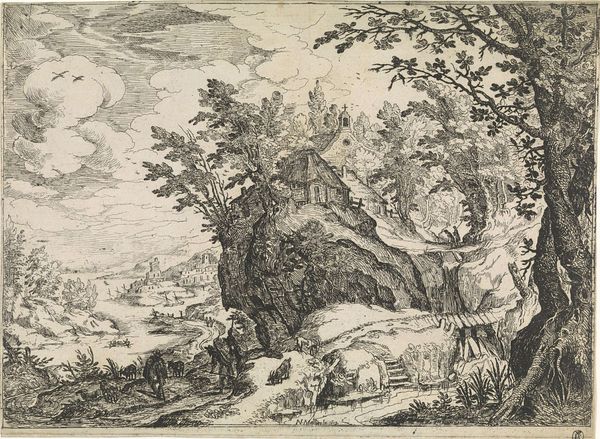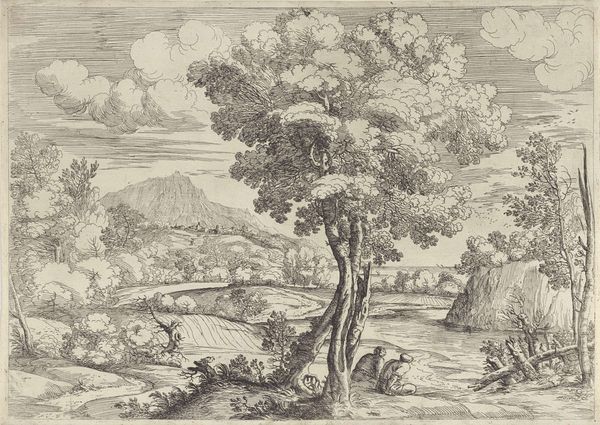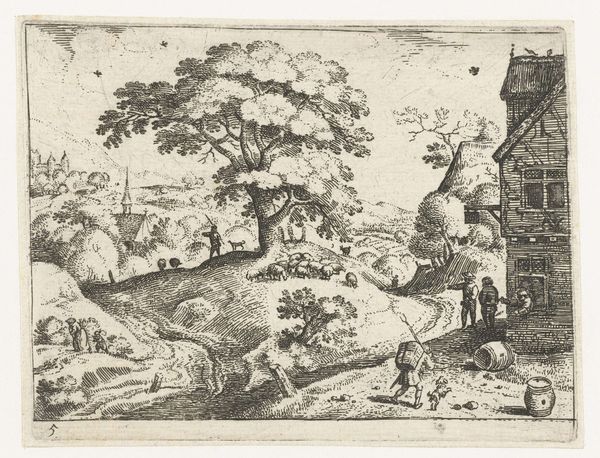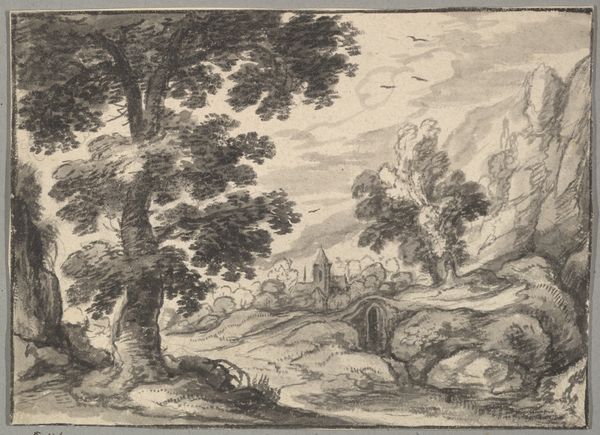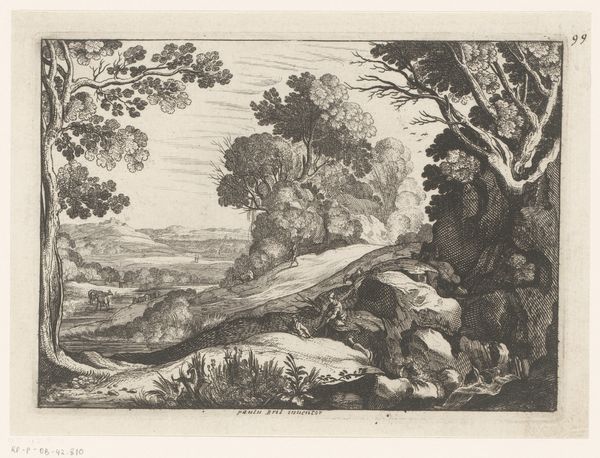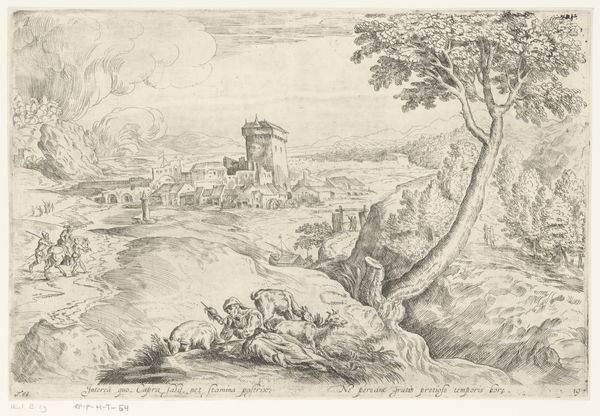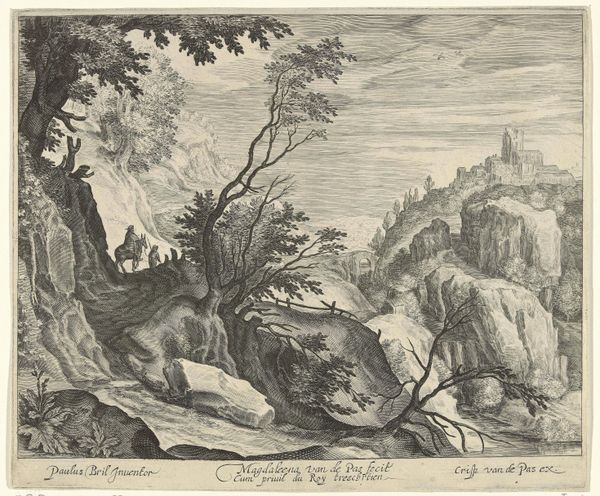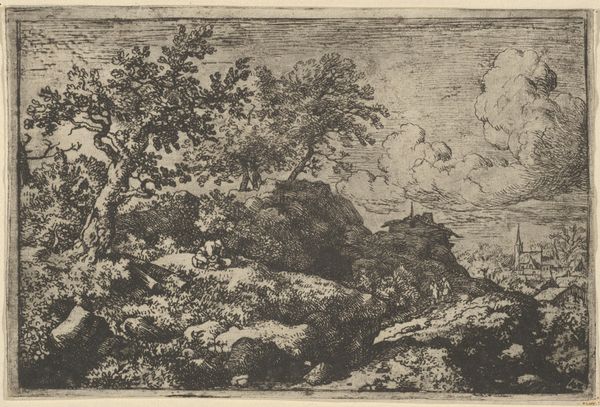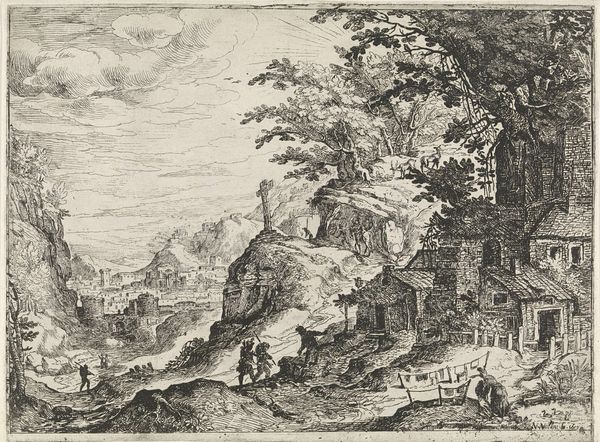
print, etching
#
medieval
#
pen drawing
# print
#
etching
#
landscape
#
northern-renaissance
Dimensions: height 225 mm, width 279 mm
Copyright: Rijks Museum: Open Domain
Editor: Here we have Johann Sadeler's "River Landscape with Island and Round Tower," an etching from 1593, now at the Rijksmuseum. It's a meticulously detailed scene; the tiny figures and architecture give the whole image a very… staged feel, almost like a theatrical backdrop. What catches your eye in terms of historical context here? Curator: I see the hand of artistic license shaping a broader dialogue. Landscapes like these were not simply observed, but constructed to convey particular ideas about humanity’s relationship with nature. How do artists shape the viewer’s perception of power through this imagery, and what’s implied about the landscape’s role within the socio-political structures of the late 16th century? Is it truly 'untouched' nature, or is it staged as a manifestation of control? Editor: So, not just pretty scenery, but also… propaganda, maybe? Curator: Potentially. Prints like this circulated widely. Consider who might have been commissioning and consuming these images. These weren’t mass-produced postcards; owning such a print signified a certain level of wealth and cultivated taste, aligning its owner with the values being projected, like order, prosperity and, of course, dominion over nature itself. What impact did printmaking have on the accessibility and interpretation of landscapes at that time? Editor: It sounds like this piece offers a lens through which to examine cultural values of the time, not just scenic views. I guess I thought it was just a landscape! Curator: And that assumption itself reveals something about how we, today, approach art. It serves as a reminder that what seems self-evident in art, is usually far more complex and socially constructed than it first appears.
Comments
No comments
Be the first to comment and join the conversation on the ultimate creative platform.
